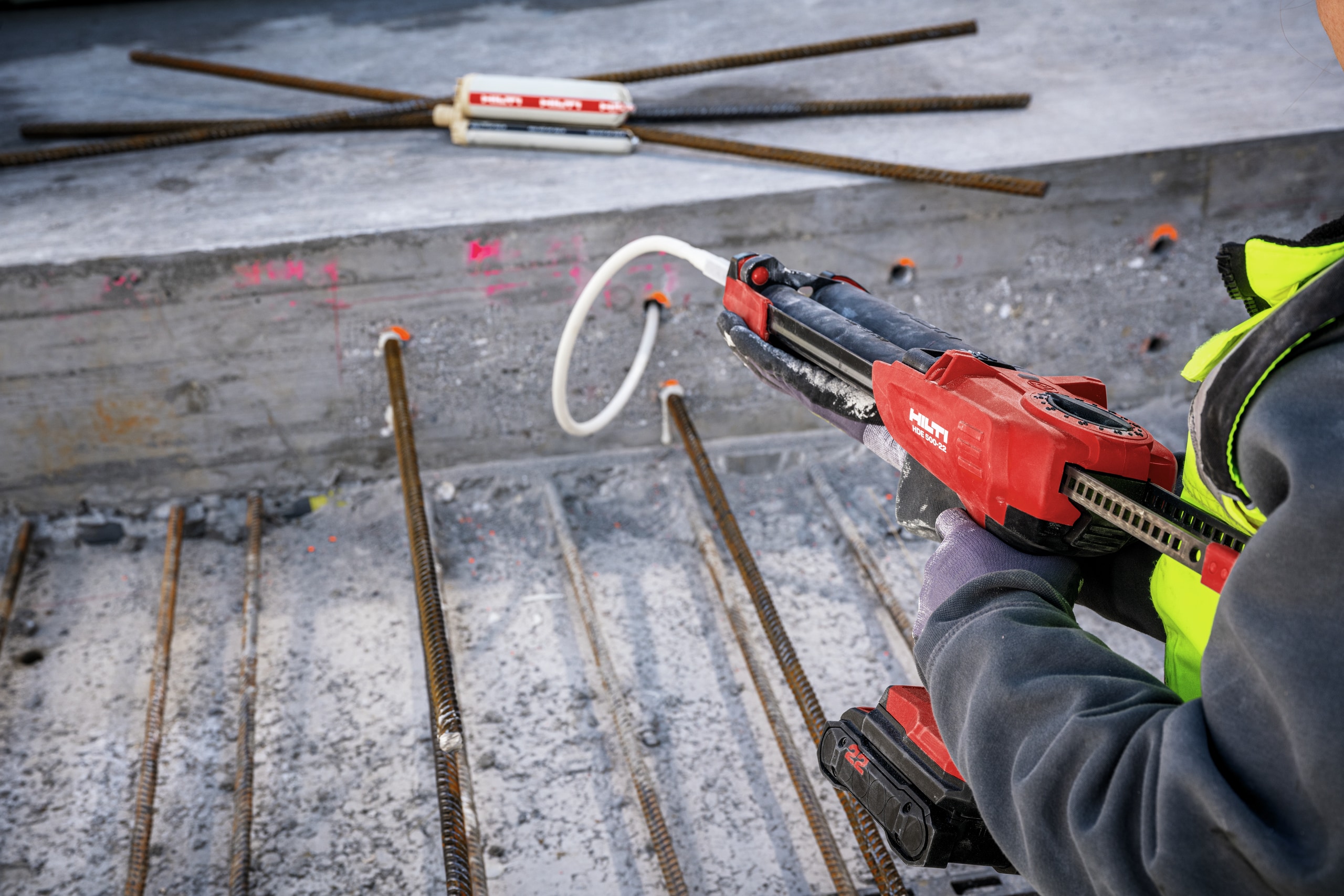- Home
- Solutions
- Business Optimization
- Rebar Design Center
- Post-installed Rebar Design

Helping engineers create the future
One rebar connection at a time
Designing concrete-to-concrete connections successfully is at the forefront of current engineering design issues, and Hilti has worked hard to help mitigate frustration by crafting post-installed rebar solutions.
With the industry rapidly evolving, we are here to help empower engineers for the future with new technology, leading design software, and advice from our technical experts.

Industry leading rebar software
Design to code when you can, get creative with research-based methods when you can’t
Achieving faster, higher quality post-installed rebar design is easier than ever with the new Concrete-to-Concrete (C2C) design module in PROFIS Engingeering. This user-friendly, cloud based application can help designers create connections using higher quality products.
Design post-installed rebar for slab/wall extensions, structural joints, or concrete overlays using a variety of methods including ACI/CSA development lengths, lap splices and anchoring-to-concrete provisions. Verify shear resistance at the interface using ACI shear friction or go beyond model code using research-based methods.

First fire-resistant adhesive HIT-FP 700 R
The future of safer structures begins today with fire-resistant connections
As the consideration for the impact of fire on structural connections grows in the industry, engineers need help to provide solutions for their projects. HIT-FP 700-R is a fire-resistant inorganic adhesive anchor that provides engineers with a solution for their concrete-to-concrete connections to help increase building safety.
We've designed FP 700 to be easier to install without comprimising the building integrity to help ensure model code compliance and support rebar design for most fire-rated structural connections.


Education from the experts
Apply the updated Acceptance Criteria testing and design standards to your post-installed anchor connections to masonry
The International Code Council Evaluation Services (ICC-ES) Acceptance Criteria for Mechanical Anchors into Masonry (AC01) and Acceptance Criteria for Adhesive Anchors into masonry (AC58) has been upgraded.
The revision of the Acceptance Criteria for post-installed anchors into masonry results in a change in testing and design method, allowing engineers to design Load and Resistance Factor Design (LRFD) for their post-installed connections to masonry.
The good news is, Hilti is prepared to help you through the changes:
- Transition your designs to the new LRFD calculations with our PROFIS Engineering masonry module
- Help keep your project compliant with Hilti's HIT-HY 270, HIT-HY 200 V3 and HIT-HY 100 adhesive anchors, which have been tested to the new AC58
- New technical data for fastening into fully grouted, partially grouted, and hollow concrete masonry units (CMU) and brick
- Hilti's Kwik Bolts (KB-TZ2 & KB1) and Kwik Hus (KH-EZ) mechanical anchors, which have been tested to the new AC01

Additional engineering resources
Engineering Center
Educate yourself, learn at your own pace, on your own time, or in a live session with industry leading experts.
Join our technical communityPROFIS Engineering
Utilize PROFIS Engineering to help guide your through new LRFD calculations for AC 58 compliance or designing post-installed rebar with the new concrete-to-concrete module.
Get started with PROFIS EngineeringTechnical experts
Whether you need technical advice on product selection, assistance with design calculations or special requirements of building owners or project inspectors, we’re ready to assist you.
Speak with a specialist